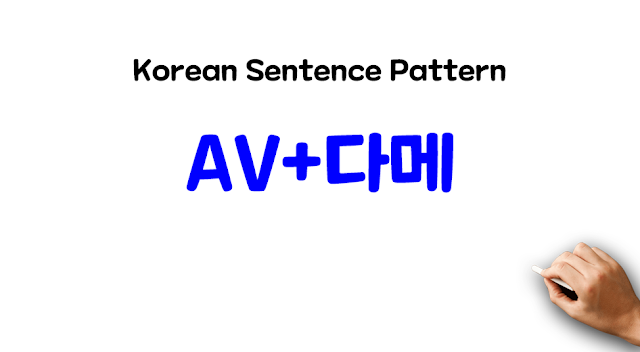Learn Korean: Active Verb + 다메
Let’s take a look at the Korean sentence pattern Active Verb + 다메. We use this when someone acts as if he didn't say something (statement). For example, I woke Jimin up so we can have breakfast together. He said he wasn’t hungry (배가 안 고파) so I ate by myself. Five minutes later, he showed up looking for his share of meal. I said You said you’re not gonna eat or Didn’t you say that you’re not eating? The main verb is 먹다 (to eat). Its negative form is 안 먹다. We take the verb stem and attach ㄴ if it ends in a vowel and 는 if it ends in a consonant. Then, we add 다메. The actual sentence is 안 먹는다메.
We also use this when we discover something contrary to what someone
(previously) said. For example, I recalled asking my friend if he knew the
ponytail girl from Class 10. He said he didn't. Today, I was checking his phone
gallery when I came across a picture of them together. They actually know each
other. So I showed it to him and said You said you don’t know her! The
main verb is 모르다 (to not know). The actual sentence is (얘) 모른다메. In past tense, attach 다메
to the ㅆ form of the verb. This pattern is used in casual
speech only.
안 본다메.
You said you wouldn’t look at it. (and now you are telling to show it to you?)
수박 안 먹는다메.
You said you don’t eat watermelon. (and now you are ordering watermelon juice?)
한국말 못한다메.
You said you can’t speak Korean. (but you are
talking in such a fluent manner now)

